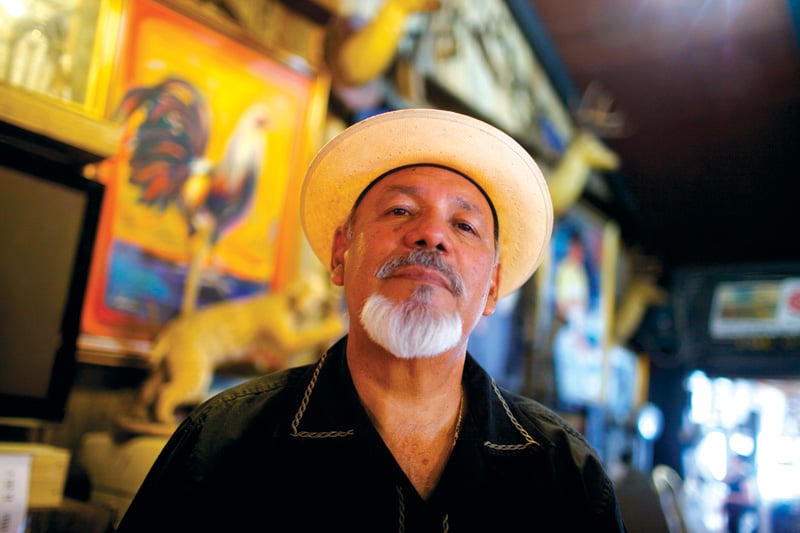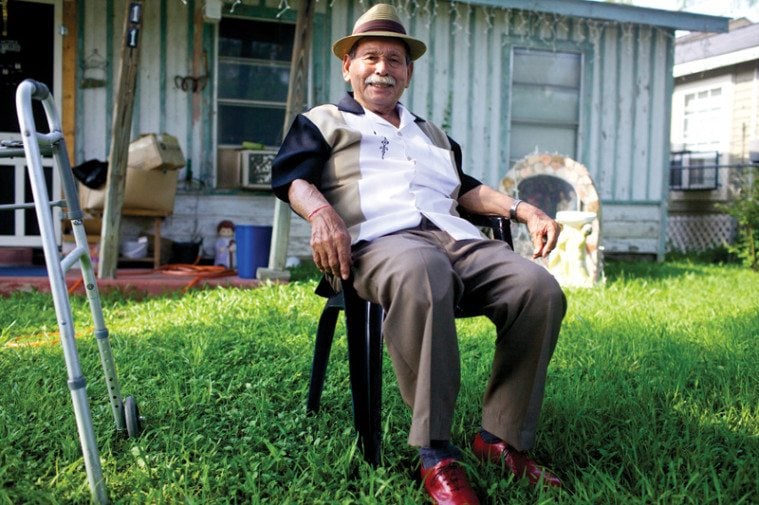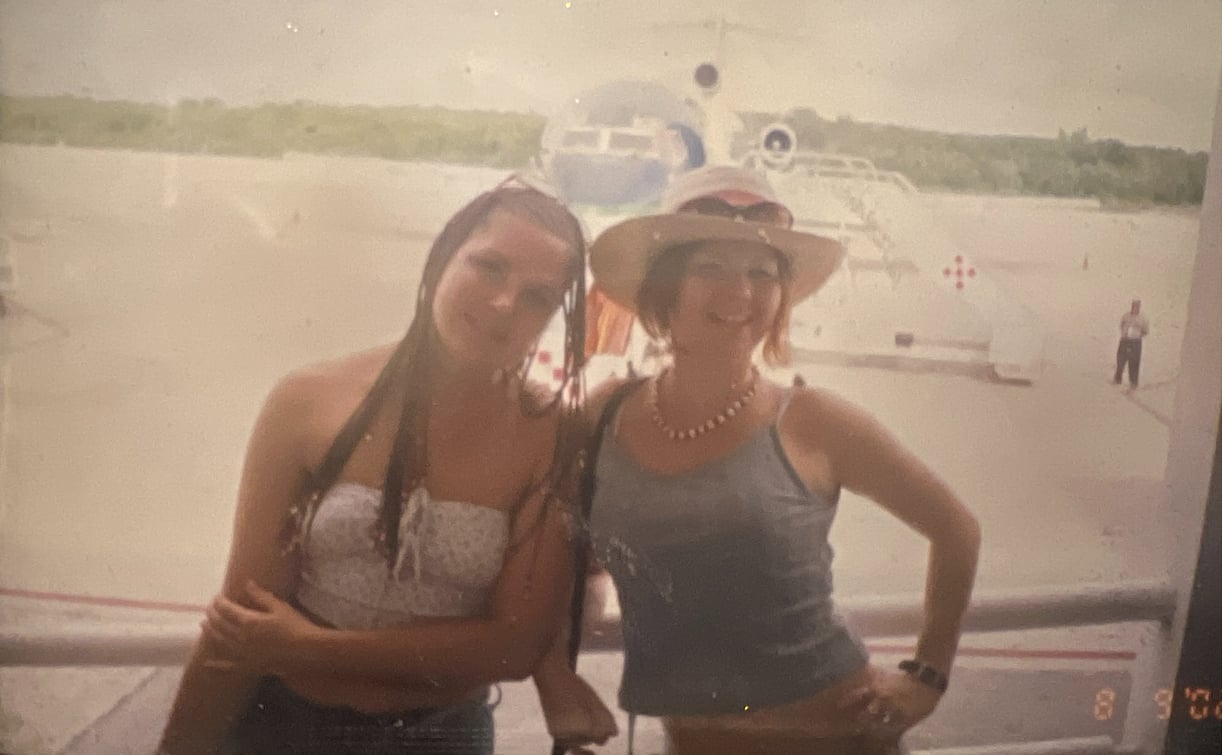
Gangs of Old San Antonio
An oral history project by UT San Antonio records the untold stories of the city's West Side gangs.

A version of this story ran in the August 2013 issue.
They shot Black Diamond between the eyes a few weeks before Christmas, 1957, as he sat in a car outside a corner store. In death, he became a legend on San Antonio’s West Side, a ladies’ man, immaculate dresser—they called him “Diamond” because of the way he shined—and leader of the Ghost Town Gang. At age 18, he was probably already on the way out, growing up and getting on with his life. Instead, one of the Lake Gang, out with some friends “to look for some Ghosts” among the neighborhood’s dusty rows of shotgun houses and bars, killed Black Diamond and started the war.
The war became a bloodbath on the West Side, and Joe Gallegos was a kid in the middle of it. “That’s kind of where it all started,” he recalls. He grew up at the corner of Laredo and 19th, and joined the Ghost Town Gang inspired by stories of his cousin Black Diamond. Gallegos was an enforcer—a kid who made good on his gang’s threat of violence—because he had his own gun, and he wasn’t afraid to plant bombs under rival kids’ homes.
The winners—whoever had the biggest, most feared gang at the end of the day—didn’t get to write the history of that war; cops and reporters did. Reading those clips today, news briefs enlarged to fill a photocopied page, Gallegos can tell you everything they got wrong. To him, Black Diamond’s death was a moon landing, a fall of the Berlin Wall, a moment that defined his West Side generation. And now, thanks to an oral history project at the University of Texas at San Antonio, he can finally commit his memory of the West Side’s fallen star to the historical record.
The project is the work of Mike Tapia (read excerpts from Tapia’s project in “San Antonio’s West Side Street Gangs In Their Own Words“), an assistant professor of criminal justice at the University of Texas-San Antonio who overheard many old men’s war stories around San Antonio, and wondered why he’d never read anything about those days. He found just one work—Quixote’s Soldiers, by David Montejano—documenting San Antonio’s 1960s gang scene and its merger with the Chicano political movement, but nothing about the decades before that, when the barrio gangs first formed. Veterans of those battles were still around to tell their stories, but Tapia knew he didn’t have long to find them.
Since early 2012, Tapia has been gathering names of the old gangs and their members, conducting interviews and piecing together the social network that governed the West Side’s street politics in the mid-20th century. He’s got about 50 gangs named so far, and he credits the study’s subjects with helping the network grow. One of them is Gallegos, who grew up to become a juvenile probation officer and mentor helping a new generation of kids leave gang life behind. Another is 75-year-old Juan “Chota” Mendoza, whose bar, Los Cocos Lounge, was named for the gang he ran with as a teenager, and served as a gathering place where old hands traded reminiscences for more than three decades.
Tapia expects his project will take years, and he’s looking for outside funding to support it beyond a small startup grant from the university. In the end, he hopes it will offer a better picture of why these gangs formed in the first place, and how they shaped the lives of their members and the city they grew up with. Cultural anthropologists of the era suggested there was some “pathology” particular to barrio kids that predisposed them to organized violence. Tapia’s subjects, on the other hand, wonder what else they were supposed to do with their time, growing up poor in a town where downtown store windows frequently featured “No Mexicans” signs, and where every walk to school involved a dangerous crossing of rival turf.
These gangs weren’t about selling drugs and getting rich, their graduates say today; they were about protecting themselves and their friends. Kids formed gangs because they were on the same ball team, they say, or hung around the Boys Club together. Many of the gang names sound innocuous today, because they took their names from neighborhood stores and bakeries. Ghost Town was a neighborhood, unpaved and sparsely populated, before it was a gang. The Lake Gang comprised kids who lived near Elmendorf Lake.
The gangs were also about getting respect, which kids claimed by carrying knives and homemade “zip guns” that shot .22 slugs. They might have killed more if they’d had better weapons, or cars, but even what bloodshed they did accomplish in the ’50s seems almost quaint compared to the horrors that peaked in the 1990s—San Antonio police counted more than 12,000 drive-by shootings in 1993, according to the San Antonio Current—or the measured ruthlessness of today’s prison gang networks.
In terms of sheer violence, San Antonio doesn’t historically compare to Houston or Dallas, Tapia says, but the city does have a particularly rich barrio gang subculture. It’s one that endures today, he says, even as well-organized, multi-state prison gangs dominate the field.
On San Antonio’s West Side streets today, Tapia says, you can still see kids running in “play group” gangs, just as they did decades ago. “You might find a kid in this day and age who is claiming the same gang that his grandfather did in the ’50s and ’60s,” Tapia says, “and I marvel at it.”

“Chota” Mendoza sits in a plastic lawn chair in front of his house on San Antonio’s South Side, his walker parked beside him, puffing on a Marlboro as a police cruiser rolls to a stop in the street.
“Looking for an old gangster?” he deadpans. The cop gets out and walks to the house across the street.
Mendoza’s nickname, slang for “police,” is one piece of his childhood he’s never shaken—he got it as a sort of hand-me-down when his brother played a cop in a school play. Mendoza has also kept a 60-year-old scar on his right arm where he got sliced with a straight razor in a bar fight. The first time we met he explained the injury: He put his hands together like he was praying, then slowly unfurled them from the top and said, “The skin went like this.”
Today he’s unearthed some of his archives, mostly photos from gang alumni reunions at his bar, and he hands them to me one at a time, pointing out notorious killers and drug dealers or, more often, women he dated. At 76, he’s as eager to tell stories of his “drive-by” trysts as he is to recount decades-old street fights.
Black-and-white photos of boys in his neighborhood, pictures he found in city archives, trigger stories from the years just after World War II, when soldiers snuck into his neighborhood looking for hookers and drugs, when he shined shoes downtown and walked home late at night across the railroad tracks and past the bars that were later leveled to build the interstate.
Mendoza and a few friends liked to hang around an all-night bakery and café called Los Cocos, and that’s what they named their gang, and what he later named his lounge. He says they were the toughest gang around, about 30 strong. He tells of street fights and bar scraps, and a friend who got shot after they threw a flower pot through a rival’s window.
He has newspaper clippings in his pile of history, too, one highlighted where some supposed authority has grossly miscounted the members of Los Cocos. He’s tired of people getting it wrong, he says, just like he’s unhappy with a conference Tapia invited him to participate in earlier this year, where he says the Ghost Town Gang got too much attention. In Gallegos’ memory, Black Diamond’s murder in 1957 is where the real gang war began, but by then Mendoza had already survived his glory days in the streets, gotten married, and left Los Cocos. “Don’t let anyone tell you different, this is where everything started,” Mendoza says. “The West Side, Red Light District.”
This latest airing of old stories is a new front in a defunct war: former warriors committing their stories to posterity. Tapia says he does his best to fact-check the stories he collects, but when it’s all done it will be a history of memories, reshaped over decades, molded by pride, and filed away alongside arrowheads and pioneer craftwork in UTSA’s Institute of Texan Cultures, a repository for the university’s archives and collections.
“Not everybody can say they lived that experience,” Mendoza says. “Like they call it, in my time that was the greatest generation.”
Mendoza isn’t the only one who believes his own personal street-fighting years were the best San Antonio will ever see. The day I met Mendoza and a few other old gangsters for lunch at Ray’s Drive Inn at Guadalupe and 19th, Mendoza named old friends and enemies who had gone on to prison, others who became university professors and others still who ended up on City Council. Everyone agreed that there was something better about the gangs back then.
“We never used to shoot up houses,” said one, a former rival of Mendoza’s who has since become his friend. “We never did graffiti. The only thing we used to steal was Cadillac hubcaps.”
“There was a lot of respect,” Mendoza agreed. “Nowadays, these gangs, they don’t respect nobody.”


